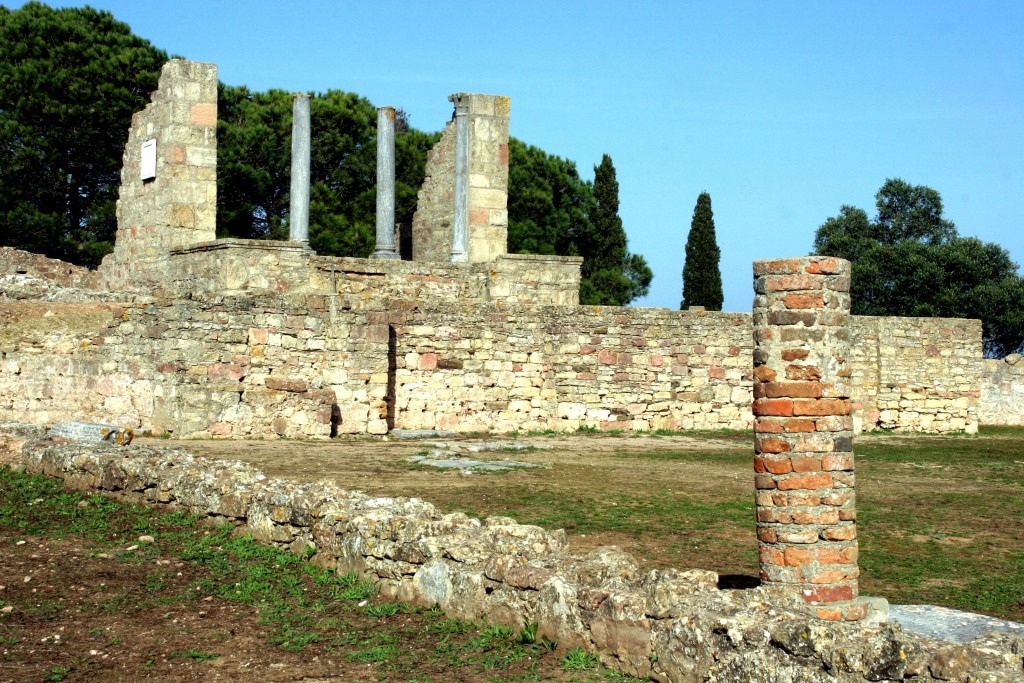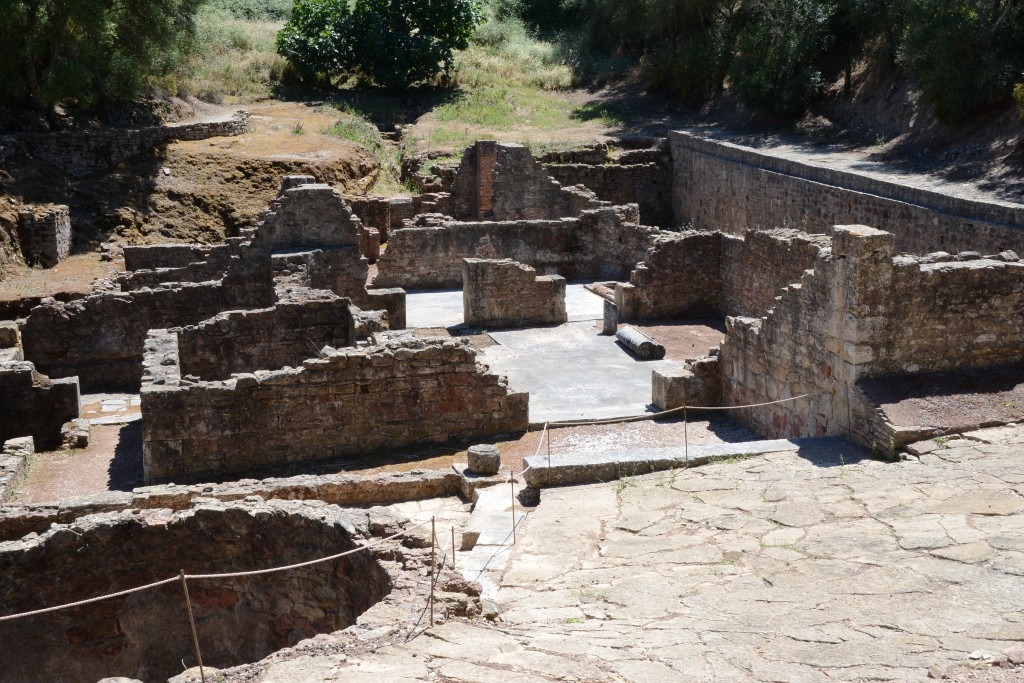Santiago do Cacém is a city overseeing 8 parish towns in rural Alentejo. Its general character is very simple and hardly feels like a city at all but still serves as a municipal centre for the daily lives of almost 30 thousand people, who depend on Santiago for its hospital, courthouse, council and schools.
Its main livelihood has, since the Bronze age, been mining, naval and agricultural commerce. Santiago’s history has many landmarks that attest to its advantage point past the hills overlooking the coast.
Miróbriga
The ruins of Mirobriga are a wonder for historians as it attests for human interest in the location since the Celts throughout the Roman Empire. Some of its more majestic features have been sacrificed to the passage of time but with some historic imagination, one can imagine the buzz of the ancient city life of Mirobriga.
The earliest remnants are of Celtic origin from around 4BC and its settlement was eventually taken over by Romans during the II century b.C. Throughout the Roman occupation, Mirobriga underwent massive urbanization to become a rural sanctuary and economic centre for the coastal economy and surrounding farmland.
During Roman influence, Mirobriga underwent the construction of the Forum, thermal bath-house and hippodrome whose ruins are still present and open to visitors interested in exploring the ruins.


Forum & Temple
The temple was erected on the highest point in the heart of the city forum serving as a centre for commerce with religious standing amongst the population, in honour to the emperor, the goddess Venus and the god of medicine Asclepius.
The forum area potentially harboured justice departments, a small library and public offices. Around the main buildings, you would find commercial buildings, small shops, and habitation.
Thermal Bathhouse
These ruins hold some of the most well-preserved bathhouse structures in Portugal. The natural inclination of the geographical area made it a prime spot for fluvial waterways, pools, latrines and thermal baths for the population.
Hippodrome
This excavation has been particularly interesting to historians as it’s the only unearthed hippodrome in Portugal. The racetrack venue lies about 1km away from the main city and measures 359m in length and 77,5m in width. It’s a medium-sized circuit but would have served the local population with racing entertainment who would have watched from lateral stands around the racetrack.
Mirobriga started to lose its lustre after the IV century in favour of what is now the modern city of Santiago since its location has more advantageous points of defence over the hills overlooking the countryside and coastline.
The Castle of Santiago
The castle of Santiago do Cacém is a military fort overlooking an expanse of 20km of countryside and coastline. The castle is of Muslim origin, build during the VIII century after the decline of Mirobriga and the occupation by Muslim forces. It maintained its occupation until the period of Reconquista, the Portuguese conquest of the Alentejo and Algarve in the name of the crown and Christianity, thus chasing the Moors and Arabs from the peninsula.
Santiago do Cacém owes its name to the order of Santiago who eventually took ownership of the lands in the XIV century after the last moor Kassim was driven out of the area.
The wear and tear of the stonework mark well the passage of centuries but also the many battles in defence of the fort and its lands. The castle sits at the highest pinnacle of the city and has a steep 15-minute walk to the top but meandering through the streets is a postcard sight at every turn. The walk takes you through old houses, colourful walls and chipping doors surrounding the fort. Inside is an unusual placing of the municipal cemetery, which regally holds between the castle walls the deceased citizens of Santiago.
Designated as the main church and a national monument, the Igreja Matriz inside the castle was built to hold religious affairs. It also served as refuge for locals during sieges on the town below. Today it is still used for mass, catechism and other catholic gatherings.
By the castle, you will also find the Tapada dos Condes de Avilez, a chapel and teahouse surrounded by a public garden. Here lies the Counts’ prized horse called Bem Mirado.

The rural city of Santiago
Santiago held its attraction to many different settlers over the centuries mostly due to its position between farmland and coast. The economy, even to this day, depends mostly on agriculture and naval exploration. Protected by high hills north, south and east, Santiago has an ideal geographic location that can oversee invading battalions from the sea and the land.
Today the area’s best produce is showcased in the famous Santiago fair, where farmers bring sheep, horses, cows and goats and other agricultural byproducts of the area, like honey, soaps, assorted food and crafts. In ancient times, these products would have also been the life source in Mirobriga forum and eventually in the markets of Santiago.
Today, many pilgrims following the paths of Santiago and the Rota Vicentina take the historical trails to this area to explore rural Alentejo and its ancient wonders. What many find is that even with the shifting of the population and urbanisation over the ages, the general character of the city remains humble and rural just as it always has throughout the ages. .
The area marks many sites that symbolise each civilisation to occupy the area, from the temple and honorific marks of Venus in Mirobriga to the many churches and chapels in and around Santiago.
Other points of interest to explore:
Railway Station: Built in 1933 with the facade depicting farmers at work and other local landmarks in traditional blue tiles. It used to connect to Sines and Beja transporting passengers and various goods until it was closed in the 1980s.
Igreja de São Pedro: A small chapel on the hillside of typical Portuguese architecture with whitewashed walls and blue panels built in the late XVI century. The building was greatly affected by an earthquake in 1969 and has since remained a ruin in the care of the estate as a monument of cultural interest.
Capela das Almas: A mortuary house founded by a priest and member of the order of Santiago, Sebastião de Matos in 1630
Igreja da Misericórdia: Founded in the XVI century by noble families of Santiago associated with the order of Misericórdia and is still in use today.
